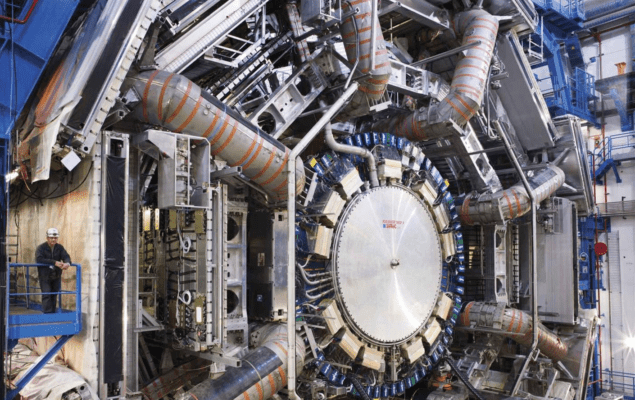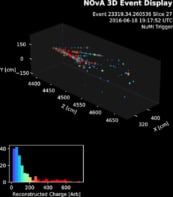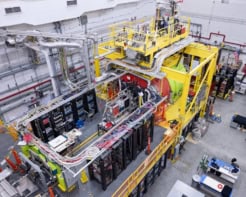
Physicists working on the ATLAS experiment at CERN have confirmed that the Higgs boson decays to two bottom quarks. The discovery was made by combining data from two runs of the Large Hadron Collider (LHC) and was announced today at the 2018 International Conference on High Energy Physics in Seoul, Korea.
Although this decay channel should account for nearly 60% of all Higgs decays at the LHC, it had proven extremely difficult to spot it amongst the vast number of particles that are produced by proton-proton collisions at the collider.
Predicted in 1964, the Higgs boson was discovered in 2012 at the LHC where it is produced in high-energy proton-proton collisions.
The Higgs boson and its associated field play an essential role in the Standard Model of particle physics. It arises from a symmetry-breaking event that occurred in the very early universe and created a uniform scalar field known as the Higgs field that pervades all space. Elementary particles such as leptons, quarks and the W and Z bosons “acquire” their distinctive masses by virtue of their unique and different couplings to this field.
Couple of quarks
It is this coupling to quarks that allows the Higgs to decay to two bottom quarks – or more precisely, to a bottom quark and an antibottom quark. These quarks immediately create jets of particles, which are then detected as they fly through ATLAS. The problem is that proton collisions in the LHC produce huge numbers of bottom-quark pairs in processes that have nothing to do with the Higgs boson.
In order to pick-out the much smaller Higgs signal, ATLAS physicists first made precise calculations of the expected contributions from other jet-producing processes. Then they showed that ATLAS has measured an excess number of jets at energies associated with the decay of a Higgs boson to two bottom quarks. Using data from the second run of the LHC – which involved 13 TeV collisions – the team detected the bottom quark decay channel at a statistical significance of 4.9σ.

CERN homes in on Higgs coupling to top quarks
This is just shy of the 5σ required for a discovery in particle physics, so they tried to bolster their statistics by looking at data from 7 TeV collisions that were collected in the first run of the LHC. Using this information, the ATLAS team was able to boost the significance to 5.4σ. Furthermore, the observed decay rate is in line with that predicted by the Standard Model of particle physics.
When combined with observations of the Higgs boson decaying to pairs of photons and Z bosons, physicists can make a 5.3σ observation of the co-production of a Higgs boson and a weak boson (either Z or W) at the LHC. This means that all four primary modes of Higgs production have been observed at the LHC at a statistical significance of at least 5σ.



